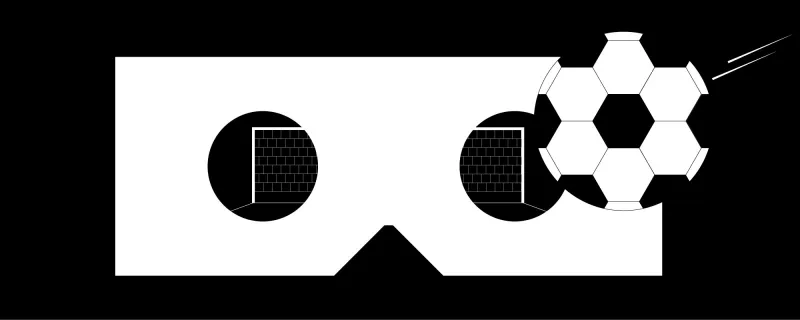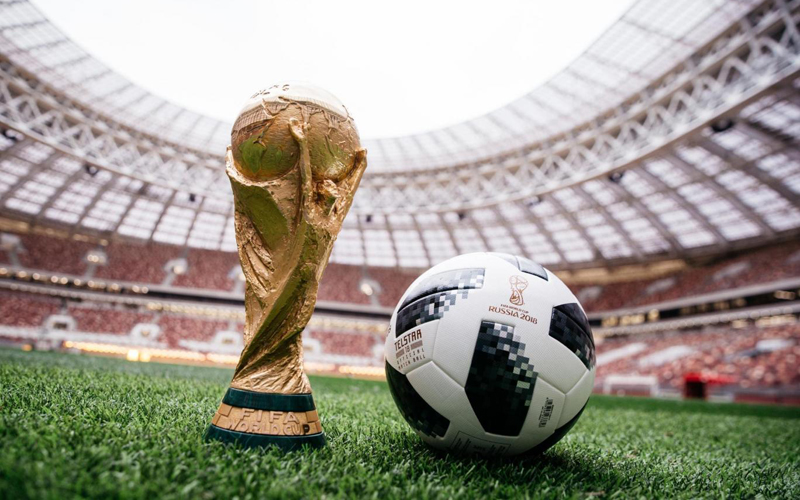


Blog / Brand Technology
Technology was the big winner at this year's World Cup
We take a look at the new technology on show in Russia, and the brands already taking advantage

So that’s it for another four years. While football didn’t quite make it home, the World Cup in Russia has been one of the most enthralling tournaments of all time. And for an agency that champions the transformative power of technology, our excitement wasn’t limited to the football itself.
Russia 2018 was undoubtably the World Cup of technology, with the debut of VAR and goal-line technology now standard. But what about the other technology you might not have noticed? We look at the tech that got us most excited – as well as what technology we might expect when the World Cup rolls back around in 2022.
The Ball
Yep, that’s right. 2018 was the year where even the ball had an element of new technology (no, not like the infamous “rounder” Jabulani ball from 2010). The competition’s official ball, the Adidas Telstar 18, was fitted with an NFC chip. While it didn’t do anything as neat as tracking the speed of the ball, fans could interact with the Telstar using their smartphones and receive a host of exclusive World Cup content.This gave Adidas another avenue with which to connect with fans, using technology to positively reinforce their brand and leveraging their sponsorship of the tournament to garner more delicious engagement, simply by re-imagining the humble football.

Data and Devices
For the first time, FIFA allowed teams at the World Cup access to devices such as a tablet or laptop – one in the stand and one on the team’s bench.This meant coaches were able to access and analyse real-time data, performance levels and other insights while the action unfolded in front of them. That might sound like the sort of thing managers are paid a handsome wage to do themselves, but this year’s group stages were amongst the most competitive of all time, with nearly two-thirds of the games being decided by just one goal and just one scoreless game. This suggests coaches have been able to draw on the live data they’re being fed and respond to any goals scored against their team in a more effective way than previously possible.
Virtual Reality
We’re probably some way off fans being able to simulate their own World Cup winner’s moment, but in 2018 the BBC gave people the chance to experience the soccer showpiece like never before, delivering their live coverage in glorious virtual reality for the first time.Using Auntie’s official app, anyone with a VR headset was able to transform their living room into a private box inside the stadium, immersing fans in the highs and lows of every game.
The BBC were all too aware that the technology is in its infancy. They even called it a “taste of the future”, and with viewers able to snack on a heap of live match stats accessible from a virtual coffee table, they weren’t wrong.
What stood out here was the positive impact of the BBC trying out new technology. They’d be the first to admit that it was all a work-in-progress, but with many viewers also praising their decision to broadcast in UHD via the iPlayer, their willingness to embrace new ideas and technology worked wonders for their brand.

AI and Deep Learning
Over the years, football has forged a strong relationship with data, with coaches, physios and analysts poring over the numbers for any advantage they might offer. Every team in Russia will have arrived with an army of analysts. However, while most teams will leave it up to these analysts to mine the data for any insight or crucial advantage, the Belgian national team have gone one step further and are using AI to give them the edge.Working with Dutch intelligence company SciSports throughout the tournament, they used machines trained in deep learning to analyse their opponents weaknesses and pinpoint any vulnerabilities. One model they created was able to asses over 100 million passes, automatically generating the impact of each individual pass and those that lead to a goal within 15 seconds. From here, it becomes easier to identify danger areas and focus on which passes need to be cut out, where and from whom.
And it isn’t just coaches taking advantage. When he was looking to leave Manchester United, Dutch forward Memphis Depay asked the company to look at the reasons for his iffy form and which club’s style of play might suit him better. He ended up moving to Lyon, where he has since rejuvenated his career.
Sticker Albums for the Snapchat Generation
The sticker album is a mainstay of the build-up to any World Cup. The familiar refrain of “got, got, need” ringing out in playgrounds across the land. This year, things were slightly different, with Panini’s digital version of the sticker album bigger than ever. The very name Panini conjures up such nostalgia amongst football fans. Many of us (well, certainly me) can remember getting their first album and the buzz that comes with opening a new packet of stickers. By ‘going digital’ Panini are ensuring they inspire those same fond memories and devotion to the brand in the next generation, one that was raised with a device in hand.
And it’s working. To date, more than six million people have downloaded app. The digital version also allowed Panini the flexibility to address and overcome one common complaint about the brand and their product. With the stickers finalised and printed long before each country names their final squad for the tournament, this usually results in out-of-date collections, with players included that are subsequently injured or dropped. No such problem with the digital version, as Panini were able to release updates and new packs throughout the tournament.
In fact, midway through the group stages, FIFA reported that there were already over 835 million stickers in circulation. No data yet on how many of those stickers are swaps!
What to Expect in 2022?
In four years’ time, the World Cup heads to Qatar. At one stage, there was talk of the country developing artificial clouds to counter the humid conditions players would face. The move to a winter World Cup might have curbed those plans, but what other technology might we see?Peering into our crystal ball, it’s a safe bet to suggest the tournament in 2022 will be a whole lot different. Expect to see more people streaming matches to their devices than ever before. Perhaps we’ll even gather together in virtual pubs to watch England’s inevitable exit? And with data analysis and machine learning proving to be such an important weapon in a team’s arsenal, might we see the first ever team coached by a robot?
Wherever technology is in 2022, what stood out most with a lot of these examples was that actually, they’re not all that ground-breaking. Particularly in the case of the BBC, Adidas and Panini, we’ve simply seen brands that are willing to experiment and see how technology might improve their customer’s experience. Often, that willingness to try something is all it takes.
If you’ve got a tech project you’d like to try, why not get in touch? At Pull, we live where brand and technology meet and would love to help.
Posted 18 July 2018 by Ben Waterhouse